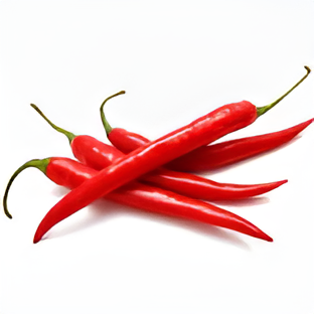
The Versatility of Chili: A Culinary Journey
Chili, a staple ingredient in many cuisines around the world, is renowned for its unique flavor profile and versatility. Whether used as a seasoning, a main ingredient, or a garnish, chili peppers come in various shapes, sizes, and heat levels, making them a favorite among chefs and home cooks alike.
History of Chili
Chili peppers originated in the Americas and were first cultivated by indigenous peoples thousands of years ago. After Christopher Columbus’s voyages, they spread to Europe and Asia, becoming integral to many global cuisines. Today, countries like Mexico, India, and Thailand are famous for their distinctive uses of chili.
Types of Chili Peppers
Chili peppers come in numerous varieties, each with its own flavor and heat level. Here are a few popular types:
- Jalapeño: Mild to medium heat, often used in salsas and sauces.
- Serrano: Hotter than jalapeños, they add a nice kick to dishes.
- Habanero: Known for its fruity flavor and intense heat, often used in hot sauces.
- Cayenne: A staple in powdered form, cayenne adds a spicy kick to many recipes.
- Ghost Pepper: One of the hottest peppers in the world, often used sparingly due to its intense heat.
Culinary Uses of Chili
Chili is incredibly versatile and can be used in various forms—fresh, dried, powdered, or in sauces. Here are some popular culinary uses:
- Salsas: Fresh salsas made with diced tomatoes, onions, and chopped chilies are perfect for dipping and add a fresh flavor to any meal.
- Chili Powder: A common seasoning in Tex-Mex dishes, chili powder is a blend of ground dried chilies and other spices. It enhances the flavor of stews, soups, and rubs.
- Curries: In Indian cuisine, chilies are used in various forms—fresh, dried, or powdered—to create flavorful curries that range from mild to fiery hot.
- Hot Sauces: From the tangy heat of Tabasco to the smoky flavor of chipotle sauce, hot sauces have become popular condiments that add spice to everything from tacos to eggs.
- Stuffed Peppers: Bell peppers, which are mild, can be stuffed with a mixture of rice, meat, and spices, offering a colorful and hearty dish.
Health Benefits of Chili
In addition to being tasty, chili peppers provide many health advantages.They contain capsaicin, the compound responsible for their heat, which has been studied for various health effects:
- Metabolism Booster: Capsaicin can increase metabolism and promote fat burning, making it a popular ingredient in weight loss diets.
- Pain Relief: Capsaicin is often used in topical creams for its analgesic properties, providing relief for muscle and joint pain.
- Rich in Vitamins: Chili peppers are high in vitamins A and C, which are essential for immune function and skin health.
- Heart Health: Some studies suggest that chili consumption may be associated with reduced risk of heart disease, thanks to its ability to improve blood circulation.
Growing Chili Peppers
For gardening enthusiasts, growing chili peppers can be a rewarding experience. Every day, try to get at least six hours of direct sunlight.
- Choosing the Right Variety: Select chili varieties suited for your climate and heat preference.
- Soil and Sunlight: Chili plants thrive in well-drained soil and full sunlight.Every day, try to get at least six hours of direct sunlight.
- Watering: Water regularly, but avoid overwatering. Though not waterlogged, the earth should be damp.
- Harvesting: Harvest chilies when they reach their full color. Different varieties may be harvested at different stages, depending on your desired heat level.
Chili in Popular Culture
Chili has also made a mark in popular culture. The famous dish, chili con carne, is often associated with Texas and has become a symbol of regional pride. Competitions such as chili cook-offs attract thousands of participants and spectators, celebrating the creativity and passion for this spicy dish.
Conclusion
Chili is much more than just a spice; it’s a vibrant part of culinary traditions around the globe. From its rich history and diverse types to its numerous health benefits and culinary applications, chili continues to inspire chefs and food lovers everywhere. Whether you prefer a mild jalapeño or a fiery ghost pepper, there’s a chili pepper out there for everyone to enjoy. Embrace the heat, experiment in the kitchen, and savor the incredible flavors that chili brings to your table.